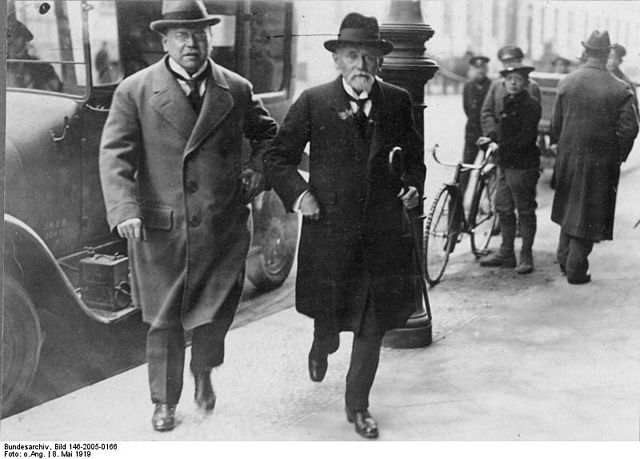History of Germany during World War I
During World War I, the German Empire was one of the Central Powers. It began participation in the conflict after the declaration of war against Serbia by its ally, Austria-Hungary. German forces fought the Allies on both the eastern and western fronts, although German territory itself remained relatively safe from widespread invasion for most of the war, except for a brief period in 1914 when East Prussia was invaded. A tight blockade imposed by the Royal Navy caused severe food shortages in the cities, especially in the winter of 1916–17, known as the Turnip Winter. At the end of the war, Germany's defeat and widespread popular discontent triggered the German Revolution of 1918–1919 which overthrew the monarchy and established the Weimar Republic.
World War I mobilization, 1 August 1914
Bethmann Hollweg in uniform. He never served in the army, but after the war started, he was appointed to an honorary rank with a general's uniform.
Mobilization order is read out in Berlin, 1 August 1914
German soldiers on the way to the front in 1914. A message on the freight car spells out "Trip to Paris"; early in the war, all sides expected the conflict to be a short one.
Matthias Erzberger was a politician of the Catholic Centre Party, member of the Reichstag and minister of finance of Germany from 1919 to 1920.
Erzberger in 1919
Painting depicting the signature of the armistice in the railway carriage. Behind the table, from right to left, General Weygand, Marshal Foch (standing) and British Admiral Rosslyn Wemyss and fourth from the left, British Naval Captain Jack Marriott. In the foreground, Erzberger, Generalmajor Detlof von Winterfeldt (with helmet), Alfred von Oberndorff, and Ernst Vanselow.
Erzberger and Minister Eduard David in Berlin, May 1919
Erzberger's birthplace in Buttenhausen is now a small museum.








